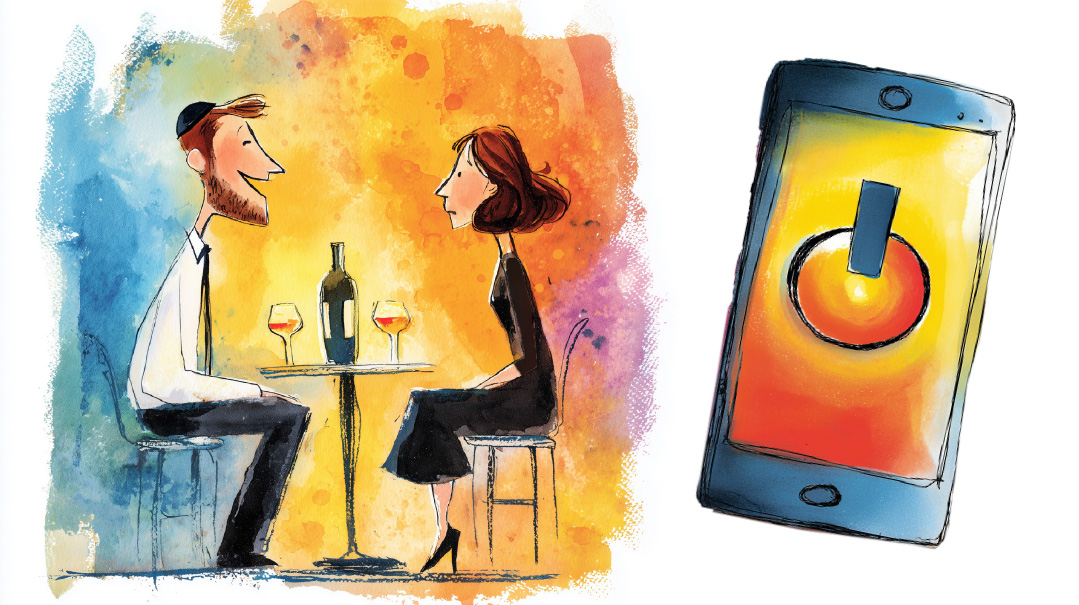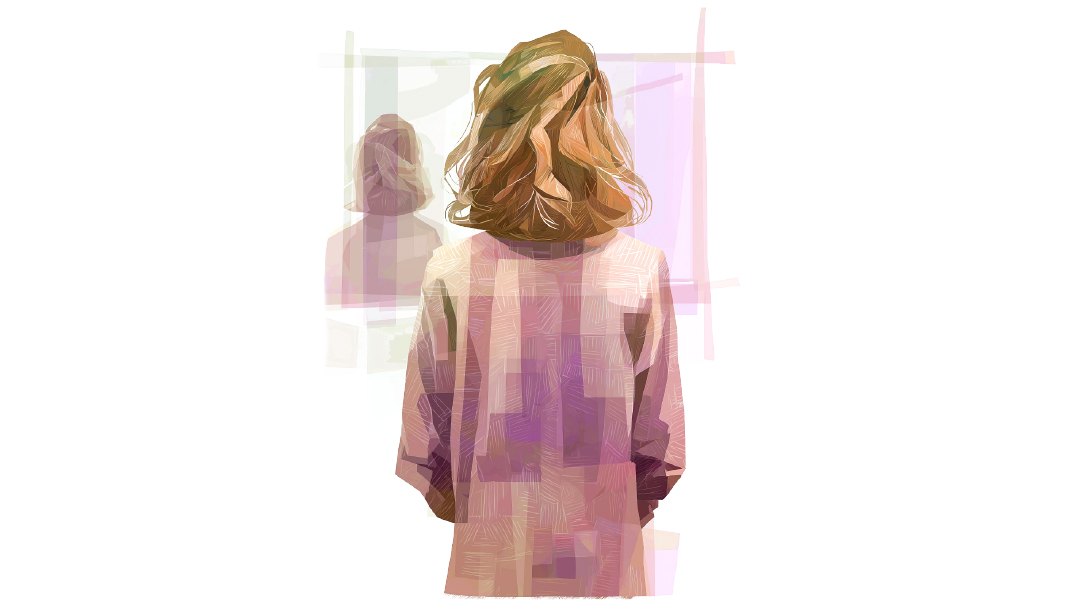Authentic Gray
| March 4, 2025Sometimes even our “gray” thoughts disguise black-and-white thinking

Authentic Gray
Shira Savit
WE
all know what black-and-white thinking around food looks like. The feeling of being “good” or “bad,” on track or off, in control or totally lost.
Many women share that they feel frustrated and exhausted with black-and-white thinking and want to feel more balanced around their eating patterns, so they attempt to be “gray.” But often I hear, “I thought I was being balanced, but I still felt so restricted. It doesn’t make sense.”
Usually this comes from what I refer to as rigid gray thinking — a disguised version of black-and-white thinking that is still rule-based. Rigid gray thinking borrows the language of balance, but still carries the pressure to “get it right.”
It’s key to remember that if following intuitive eating guidelines turns into a reason for self-judgment, it stops being a gentle guideline and becomes another rigid rule.
Sometimes rigid gray thinking can sound like: “I wanted to be balanced, so I had a salad and a cookie after. Not because I really wanted it, but to make sure I wasn’t being ‘too healthy.’ ” The idea of including all kinds of food is important, but balance isn’t about forcing a perfect mix.
Or it can sound like: “I try to eat mindfully at every meal, but sometimes I’m in a rush or distracted, and then it feels like I’m not doing it right.” Mindful eating isn’t about perfection — it’s about awareness, and that can look different in different moments.
The tricky part is that rigid gray thinking doesn’t sound restrictive. It sounds like we’re doing better, healing, moving away from extremes. But if you still feel that pressure — if there’s still a voice saying you have to do this right — then we’re still caught in the same cycle.
So what does the authentic gray look like?
It’s softer. It’s nuanced.
Some days, a balance of gray means checking in with your hunger. Other days, it means eating something just because it’s there. Some days, it means choosing a nourishing meal; other days, it means getting takeout because you’re too tired to cook. Sometimes, you eat emotionally. Sometimes, you don’t.
True balance isn’t about always making the “right” choice. It’s about stepping out of the mindset that there is a right choice. It’s about allowing yourself to feel whatever comes up around food — whether it’s guilt, anxiety, frustration, or even just uncertainty — without trying to push those feelings away. If you eat something and feel guilty, instead of panicking and thinking, “I shouldn’t feel this way!” you can gently remind yourself, “It makes sense that I feel this way, given my history with food. But this one choice doesn’t define me.”
It’s about trusting that your body will find its own rhythm over time. You don’t have to micromanage every meal, every craving, every choice. One moment of overeating, one day of feeling disconnected, one instance of emotional eating — none of that is a problem to fix. Your body knows how to adjust, how to settle into balance over the course of days, weeks, months.
Most of all, authentic gray thinking is about letting go of the idea that you have to prove anything — to yourself, to others, to some invisible standard of what a “healed” relationship with food should look like.
Letting go of black-and-white thinking isn’t about replacing it with a new set of flexible-looking or sounding rules. It’s about learning to live in the space where balance happens over time, and where trust is built slowly.
Eating doesn’t have to be something you get exactly right. It can just be. And that’s where real peace happens.
Shira Savit, MA, MHC, INHC is a mental health counselor and integrative nutritionist who specializes in emotional eating, binge eating, and somatic nutrition. Shira works both virtually and in person in Jerusalem.
Seen but Not Heard
Zipora Schuck
T
he outdated expression “children should be seen and not heard,” refers to an era when the young were afforded minimal respect and rarely given a voice. Times have changed in how we listen to children and encourage open expression and communication. But has it changed too much?
I recently attended a shabbaton and was listening to one of the wonderful speakers. A few mothers in the audience brought infants and toddlers to the session. In the middle of the speech, some of the babies started crying, and one of the youngsters was getting increasingly loud, making it hard to hear the speaker. The speaker stopped her speech and quipped that her relative used to always say, “Children are a great idea, and great ideas should be carried out!” While everyone laughed, and some of the mothers left with their children, others did not.
It made me wonder about an unwritten social contract we’re all a part of: kids and their place. Do children belong everywhere? What about a fancy restaurant where you hope to celebrate your anniversary or conduct a business dinner? What about a speech geared to adults? What about davening in shul?
Maybe the parameter should be that if the event is optional, like an evening out and the children could disturb the next person’s experience, then perhaps they stay home, even if it means you won’t be able to go. If there isn’t a choice in your child’s or your attendance, like a plane ride, then people understand that generally today children are heard and seen.
Zipora Schuck MA. MS. is a NYS school psychologist and educational consultant for many schools in the NY/NJ area. She works with students, teachers, principals, and parents to help children be successful.
How to Choose the Practical over the Fun
Hadassah Eventsur
AS
a coach for women with executive functioning challenges, I teach my clients about the importance of honoring their future self, which means doing things ahead of time to make things easier for themselves in the near future. For example, many women struggle with the morning routine. I encourage my clients to identify which barriers impact the flow of their morning routine and set aside some time in the evening for “closing duties” during which they tackle tasks such as setting out clothing, locating keys, or writing mitzvah notes.
One of my clients once shared that on occasion she feels the urge to do something she enjoys during this time instead of the practical tasks she identified. I told her that making this choice is perfectly fine, we don’t always have to push ourselves, but that if she wanted to choose otherwise, she should picture what her morning would look like without her having done these “closing duties.” Imagining how doing (or not doing) a particular task will affect the future outcome really helps generate motivation to choose the practical over fun.
Hadassah Eventsur, MS, OTR/L is an Occupational Therapist and Certified Life Coach. She founded MindfullyYou, to support women who struggle with Executive Functioning
(Originally featured in Family First, Issue 934)
Oops! We could not locate your form.







